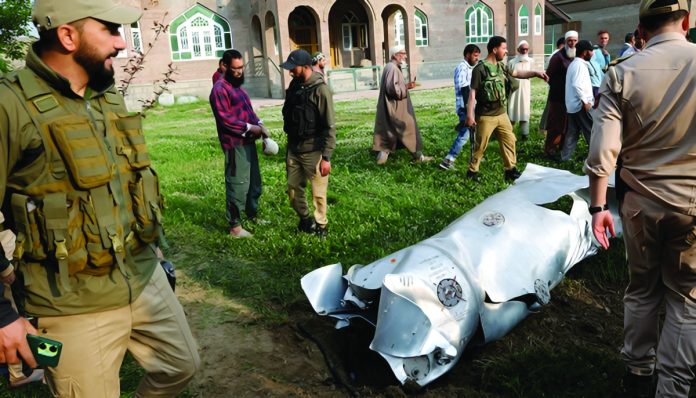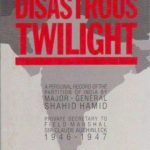Mirza Kashif Baig
The April 22, 2025, Pahalgam attack, which killed 28 people, including two local Kashmiris, is globally viewed as a false flag operation orchestrated by India to serve domestic political ends. Coming just months before crucial state elections in Bihar, the incident conveniently allowed the ruling party in New Delhi to whip up nationalist sentiment. This narrative is internationally accepted, including senior politicians and intellectuals of India.
Pakistani officials immediately suspected that the carnage was stage-managed to justify aggression, a suspicion reinforced when Indian authorities pinned blame on Pakistan within minutes, without any investigation. Prime Minister Narendra Modi even seized upon the attack at an election rally in Bihar, issuing fiery vows to hunt down and punish the supposed perpetrators. To Islamabad, the pattern was familiar: a dubious terror incident like Pulwama in 2019, in Kashmir, was leveraged to bolster the Indian government’s hardline image ahead of elections.
Instead of allowing an impartial inquiry, India rushed to launch Operation Sindoor a series of cross-border “retaliatory” strikes inside Pakistan barely two weeks after the Pahalgam incident. This rash decision to escalate militarily over 26 casualties of Indians, and that two Kashmiries were not considered, was unprecedented and dangerously lowered the threshold of war in South Asia.
New Delhi’s willingness to risk a broader conflict without verifying culpability showed a reckless disregard for diplomatic norms. Islamabad, which categorically denied involvement and urged a joint investigation, suddenly found itself under attack based on flimsy pretexts. By acting as judge, jury, and executioner on day one, India underscored its leadership’s impulsive brinkmanship and set a perilous new “normal” for responding to such incidents.
Pakistan’s military response was swift and punishing, swiftly turning India’s venture into a debacle. What New Delhi had code-named Operation Sindoor was soon being derisively called “Operation Vidhwa” (“widow”) by observers, alluding to the heavy losses inflicted on Indian forces. In the aerial skirmishes that followed, the Pakistan Air Force decisively outmatched its adversary, establishing Pakistan’s clear tactical superiority in the skies. Pakistani pilots shot down seven Indian fighter jets reportedly including three of India’s new Rafale fighters while not losing a single aircraft of their own.
An operation that India intended as a show of strength instead became a rout, with Indian warplanes falling from the sky and Indian military vulnerabilities laid bare. The grim irony was not lost: a mission named after sindoor (the vermilion symbol of marriage) had left behind many grieving Indian families.
A key factor in Pakistan’s triumph was its effective use of modern Chinese-supplied weaponry, coupled with Pakistan’s additional features and training skills, deception, cyber, Electronic warfare, and using satellite support, demonstrating the superiority of technology in real combat. Pakistani J-10C fighter jets (Chinese-built) armed with long-range missiles engaged and destroyed high-value Indian targets from beyond visual range, even downing at least one French-made Rafale jet.
On the ground, Pakistan showcased a game-changing capability by using Chinese “hypersonic” missiles launched from JF-17 jets to obliterate two of India’s S-400 air defense systems. One in Bhojpur and the other in Adampur. Taking out India’s most advanced Russian-made missile shield and its frontline fighters in short order confirmed that the Chinese Missile PL15 original of full capacity, and Fatah-1 of Pakistan, made, could decisively neutralize India’s prized Western and Russian platforms. Indian Prime Minister Narender Modi visited Adam Nagar and took a picture with a missile, but the Radar that destroyed it and the Missiles were made completely ineffective. The conflict became a proving ground for Chinese and added Pakistan’s cyber arms, and the outcome emphatically validated their effectiveness.
Throughout the crisis, India’s behavior appeared increasingly irrational and fuelled by false narratives. A hyper-nationalist Indian media helped drive the frenzy, amplifying unverified official claims while denouncing Pakistan’s counter-claims as “misinformation”. Delhi’s propaganda initially painted Operation Sindoor as a success and denied any Indian losses, but this fiction crumbled as evidence to the contrary emerged. Wreckage of Indian jets on Pakistani soil made denial untenable, and even Indian military briefings tacitly acknowledged “losses” as inevitable. By clinging to disinformation that was swiftly debunked, India’s leadership only underscored how divorced from reality its assessments had become. The episode highlighted a dangerous tendency in New Delhi to believe its own hype a mistake for which it paid dearly once the shooting started.
In the aftermath, the confrontation has effectively reset the regional balance of power in favor of Pakistan and its ally China. Pakistan emerged vindicated on the world stage no major power endorsed India’s reckless attack, and several key countries openly backed Islamabad’s position. Beijing’s support was especially robust: China not only provided diplomatic cover for Pakistan at the UN but also expedited military aid and intelligence, reinforcing Pakistan’s defense.
Meanwhile, India has been left grappling with the exposure of its strategic insecurities. The aura of conventional superiority that New Delhi enjoyed has been shattered. Sensing India’s vulnerability, global powers particularly the United States are now poised to exploit it. Washington sees an opportunity to peddle expensive weapons systems to India under the pretext of filling the gaps revealed by this conflict. As the world’s largest arms exporter, the US stands eager to profit from New Delhi’s rush to rearm, which will only drain India’s treasury while flattering its wounded pride. In the final analysis, what was meant to assert Indian dominance has instead revealed India’s weaknesses and invited external exploitation. Ultimately, the myth of Indian military superiority has been shattered, and Pakistan’s standing on both the diplomatic and battlefield fronts has been decisively elevated.
The author is the Editor of the monthly Interaction.







